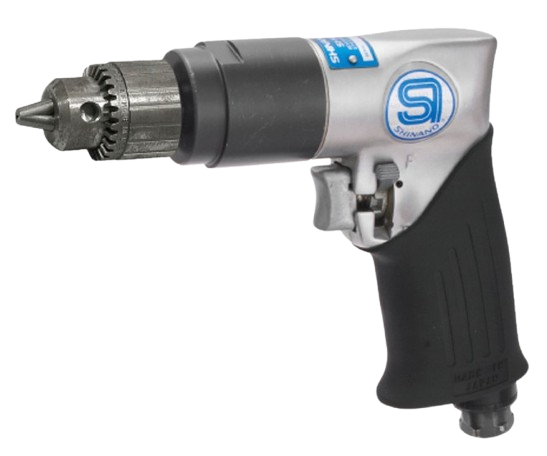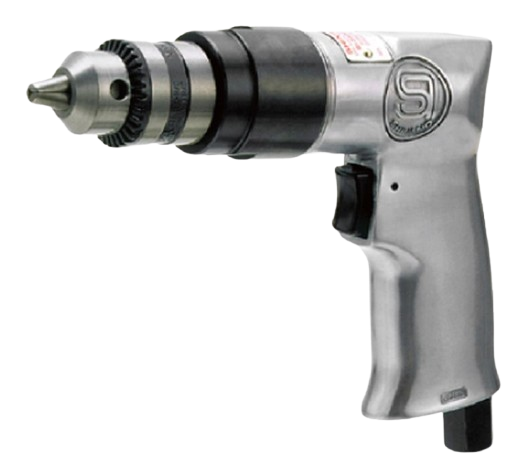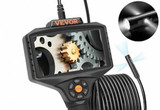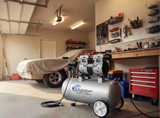Mastering Air Drill Performance: Applications, Techniques, and Maintenance for the Professional User
Owning a professional-grade air drill is the first step; mastering its application, understanding its performance nuances, and committing to its maintenance is what truly unlocks its potential and ensures a long, productive life. In our companion article, we explored the technology and selection of air drills, highlighting the excellence of brands like Shinano. Now, we shift our focus to the practical realm: how to wield these powerful tools across various industries, how to measure and optimize their performance, and how to implement a maintenance regimen that guarantees they're always ready for the job.
From the high-stakes precision of aerospace to the rugged demands of construction, air drills are the workhorses behind countless successful projects. This article will guide you through these diverse applications, offering insights into which type of air drill excels where, using specific Shinano models as practical examples. We'll delve into performance testing, share techniques for cleaner, faster, and safer drilling, and provide a comprehensive guide to maintenance and safety protocols. By internalizing these practices, you can elevate your craftsmanship, boost your efficiency, and ensure your air drill remains a trusted partner for years to come.
Key Takeaways
- Air drills have specific advantages in industries like automotive, construction, manufacturing, and aerospace.
- Matching the drill type (Pistol, Angle, Straight) and specs (Torque, RPM) to the job is crucial; Shinano offers models for diverse needs.
- Proper technique (bit selection, starting, pressure, clearing chips) enhances results and tool life.
- Regular maintenance, especially daily lubrication and air line care, is essential for longevity.
- Safety is paramount: Always use appropriate PPE and follow safe handling procedures.
Air Drills Across Industries: The Right Tool for the Trade
The versatility of air drills makes them a staple in numerous professional fields. Their unique advantages—power, durability, and safety—make them particularly suited for specific challenges within each sector.
- Automotive Repair & Manufacturing: The automotive world is fast-paced and demands tools that can handle both brute force and precision. Air drills shine here.
- Tasks: Drilling out spot welds, creating mounting holes for accessories, working on engine components, metal fabrication, panel removal, tapping threads.
- Why Air Drills? Consistent power for metal drilling, lighter weight for working in awkward positions (under cars, in engine bays), and safety around flammable fluids.
- Shinano Examples:
- SI-5305A (3/8" Reversible): Its reversibility is key for tapping and removing fasteners, while its 2000 RPM offers a good balance for general metalwork.
- SI-5355 (3/8" Angle Drill): Indispensable for accessing bolts and drilling points in cramped engine compartments or behind dashboards.
- Construction & Renovation: Construction sites are tough environments. Tools need to be robust, powerful, and reliable day in and day out.
- Tasks: Drilling through wood framing, metal studs, light masonry (with appropriate bits), installing hardware, securing fixtures.
- Why Air Drills? High torque for large bits (augers, hole saws), durability to withstand dust and drops, and continuous power without overheating.
- Shinano Example:
- SI-5305-8A (1/2" Reversible): With its 1/2" chuck, low 800 RPM, and high torque (11.66 Nm), this drill is built to power through thick timber and handle large fasteners. The side handle provides the necessary leverage and control.
- Manufacturing & Assembly Lines: Here, repetition, speed, and reliability are paramount. Air drills, often integrated into production lines, excel in these settings.
- Tasks: Repetitive drilling in metal, plastic, or wood; assembly tasks; fixture creation.
- Why Air Drills? Low heat buildup allows for continuous operation, consistent torque ensures uniform results, and lower weight reduces operator strain in high-volume settings.
- Shinano Example:
- SI-5500 (3/8" Drill): Its lightweight design (0.79 kg) and high speed (2600 RPM) make it ideal for fast, repetitive drilling tasks where user fatigue is a concern.
- Aerospace & Precision Fabrication: This sector demands absolute precision and control. Tools must be reliable and often need to fit into very tight spaces.
- Tasks: Drilling precise holes in aluminum, composites, and exotic alloys; rivet hole preparation; working inside airframes.
- Why Air Drills? Excellent throttle control for precision starts, straight and angle configurations for access, and reliability for critical components.
- Shinano Examples:
- SI-2015AD (1/4" Straight Drill): Its high speed (6000 RPM) is often preferred for smaller holes in aluminum, and its in-line design allows for direct, controlled pressure in confined areas.
- SI-5355 (3/8" Angle Drill): Essential for working within ribs, bulkheads, and other tight structures common in aircraft.
- Woodworking & Craftsmanship: While often associated with electric tools, air drills offer benefits in woodworking, especially in production environments or when detailed control is needed.
- Tasks: Drilling pilot holes, creating holes for dowels or hardware, detailed joinery preparation.
- Why Air Drills? Good speed control for clean holes, lightweight for intricate work, and no risk of overheating when working on large projects.
- Shinano Example:
- SI-5500 (3/8" Drill): Its balance of speed and control makes it a versatile option for various woodworking tasks, offering precision without excessive weight.
Performance Metrics Deep Dive: Understanding the Numbers
The original article touched upon testing, but let's refine what performance means for air drills:
- Torque (Nm or ft-lb): This is the twisting force. High torque is needed for large bits, hard materials, and low-speed operation. The Shinano SI-5305-8A boasts 11.66 Nm, making it a torque champion.
- Free Speed (RPM): The speed at which the drill spins with no load. This indicates potential drilling speed, but speed under load is more telling. High RPM (like the SI-2015AD's 6000 RPM) is good for small bits and soft materials.
- Power Output (Watts): A measure of the overall work the drill can do. Higher wattage generally means a more capable tool. The SI-2015AD leads the listed models at 457 Watts.
- Air Consumption (CFM/L/S): A crucial efficiency metric. Lower CFM means less demand on your compressor. The SI-5500 is very efficient at 2.5 CFM, while more powerful models like the SI-5305-8A need 4.2 CFM.
- Precision & Control: This isn't just one number. It's about the feel of the variable speed trigger, the amount of 'wobble' or runout at the chuck, and the balance of the tool. Shinano's focus on tight tolerances generally leads to excellent precision.
- Durability: Assessed through material quality (metal gears/housings), bearing quality, and resistance to environmental factors (dust, moisture).
Testing Your Air Drill: While professional users often rely on feel and experience, you can perform simple tests:
- Consistency Test: Drill multiple identical holes. Does the drill maintain speed? Are the holes uniform?
- Load Test: Gradually increase the challenge (larger bit, harder material). How does the drill respond? Does it bog down easily, or does it maintain power?
- Air Leak Test: With the tool connected but not running, listen for hissing sounds at connections or within the tool.
Mastering Air Drill Usage: Techniques for Pros
Using an air drill effectively goes beyond just pulling the trigger.
- Bit Selection: Always use sharp, high-quality drill bits designed for the material you are drilling. Using the wrong bit or a dull bit is inefficient and dangerous.
- Starting Holes: Use a center punch to create an indentation, preventing the bit from 'walking'. Start the drill slowly using the variable speed trigger, increasing speed only once the hole is established.
- Pressure Application: Apply steady, even pressure in line with the drill bit. Don't force the drill; let the tool do the work. Too much pressure can cause overheating, bit breakage, or stalling.
- Material Considerations:
- Metal: Use cutting fluid or oil (especially on steel and aluminum) to reduce heat and friction. Use lower speeds for harder metals and larger bits. Peck drilling (drilling a short distance, backing out to clear chips, and repeating) is essential for deep holes.
- Wood: Use higher speeds. Back the workpiece with scrap wood to prevent tear-out when the bit exits.
- Plastics: Use moderate speeds and light pressure to avoid melting the plastic.
- Clearing Chips: Periodically back the drill bit out of deep holes to clear chips and prevent binding.
- Using Reversibility: When backing out a stuck bit, use the reverse function carefully. Sudden high-speed reversing can be jarring.
- Angle & Straight Drills: Leverage their design. For angle drills, ensure a firm grip to counteract torque. For straight drills, use your body weight for steady, in-line pressure.
Maintenance & Longevity: Protecting Your Investment
Air drills are durable, but they aren't invincible. A consistent maintenance routine is key to performance and lifespan.
Daily Checks:
- Lubrication: Add 3-5 drops of air tool oil into the air inlet before every shift (unless using an FRL). Cycle the drill briefly to distribute the oil.
- Listen: Pay attention to any unusual sounds (grinding, excessive whining) which might indicate internal issues.
- Visual Inspection: Check for loose fittings, damaged housing, or a worn chuck.
- Wipe Down: Clean any dirt, grease, or debris from the tool body.
Weekly/Monthly Checks:
- Air Line Health: Drain your compressor tank daily to remove moisture. Check your FRL – ensure the filter is clean, the regulator is set correctly, and the lubricator has oil and is dripping at the recommended rate (usually 1-2 drops per minute of use).
- Chuck Inspection: Check the chuck for smooth operation and secure bit grip. Clean out any debris. For keyed chucks, ensure the key isn't worn.
- Hose & Fittings: Inspect air hoses for cracks, bulges, or leaks. Ensure fittings are secure and O-rings (if used) are intact.
Periodic Service:
- Depending on usage, consider a professional service every 1-2 years to inspect internal components like motor vanes, bearings, and gears.
Storage:
- Store air drills in a clean, dry place. Avoid leaving them connected to air lines overnight, especially in unheated workshops where condensation can form.
Safety First: Operating Air Drills Professionally
Power tools demand respect. Adhering to safety protocols is non-negotiable.
- Personal Protective Equipment (PPE):
- Eye Protection: Always wear safety glasses or goggles. Flying debris (metal shavings, wood chips) is a constant hazard.
- Hearing Protection: Air tools, especially when used heavily, can be loud. Use earplugs or earmuffs. Shinano models list their dBA levels (e.g., SI-5500 is 85 dBA, SI-5305-8A is 91 dBA).
- Gloves: Can protect against sharp edges and minor impacts, but ensure they don't compromise your grip or get caught in rotating parts.
- Respiratory Protection: When drilling materials that produce fine dust (composites, certain woods, masonry), wear a dust mask or respirator.
- Work Area Safety: Ensure a clean, well-lit workspace. Secure your workpiece with clamps or a vise; never hold small workpieces by hand while drilling. Be aware of your footing and surroundings.
- Tool Handling:
- Always disconnect the air supply before changing bits or performing maintenance.
- Never point an air tool at yourself or others.
- Use a firm, two-handed grip, especially with high-torque drills (use the side handle if provided, like on the SI-5305-8A).
- Be prepared for the tool's torque reaction, especially when the bit breaks through the material or binds.
- Air Hose Management: Keep hoses clear of walkways to prevent tripping hazards. Avoid kinking or running over hoses.
Frequently Asked Questions (FAQs)
- My air drill feels sluggish and weak. What's the most likely cause? The most common causes are: a) Insufficient air supply (check compressor PSI/CFM and look for leaks/kinks in the hose), b) Lack of lubrication (oil the tool immediately), or c) A clogged air inlet filter (check and clean if your tool has one).
- Can I use any oil in my air drill? No. Only use oil specifically formulated for pneumatic tools. These oils are low viscosity, contain anti-rust agents, and won't gum up the internal mechanisms or damage seals like some other oils (e.g., motor oil, WD-40) can.
- What's the best way to drill a large hole (e.g., 1 inch) in thick steel with an air drill? Use a powerful, high-torque, low-speed drill (like the Shinano SI-5305-8A). Start with a smaller pilot hole (e.g., 1/4 inch), then progressively use larger bits until you reach your final size. Use plenty of cutting fluid and apply steady, firm pressure with a low RPM.
- Why does my air drill's exhaust feel so cold? This is normal and a principle of thermodynamics called the Joule-Thomson effect. As the highly compressed air rapidly expands inside the motor and exits, it cools down significantly. This is one reason air drills run cooler than electric ones.
- How do I prevent my drill bit from 'walking' when starting on a smooth metal surface? The best method is to use a center punch and a small hammer to create a small indentation exactly where you want the hole. Place the tip of the drill bit into this indentation before starting the drill. Begin drilling very slowly until the bit has established a shallow hole, then increase speed and pressure.
Related Articles:
- The Ultimate Guide to Pneumatic Air Tools: Everything You Need to Know
- 15 Essential Pneumatic Tools Every Workshop Must Have
- 10 Essential Air Tools Every Mechanic Needs for Automotive Excellence
- Shinano Pneumatic Tools Japan - Tend Industrial supplies
- Top 10 Shinano Air Tools for Professional Mechanics in 2024
- The Ultimate Drill Showdown: Optimizing Performance and Extending Lifespan for Air and Electric Drills
Conclusion
Professional air drills, especially high-quality models from brands like Shinano, are formidable tools capable of tackling immense challenges. However, their true value is realised when a skilled professional combines their power with expertise in application, a commitment to proper technique, and a diligent maintenance schedule. By understanding how to match the right drill, be it a high-torque SI-5305-8A for construction or a high-speed SI-2015AD for fabrication, to the specific task, and by implementing the usage, maintenance, and safety practices outlined here, you can ensure your air drill performs at its peak, project after project. This mastery transforms a simple tool into an extension of your professional skill, delivering results that are efficient, precise, and safe.
You've mastered the applications, refined your techniques, and learned the essential maintenance for your air drill. But to truly maximize your workshop's efficiency and ensure your tools are always performing at their peak, professional-grade support and top-tier equipment are invaluable.
Ready to upgrade your air drill arsenal, find specific accessories, or need expert advice on maintaining peak performance?
Contact Tend Industrial Supplies today! Our team is dedicated to providing the best tools and solutions for professional users.
Email us at sales@tendsupplies.com or visit tendsupplies.com to explore our comprehensive range of air drills, accessories, and maintenance supplies.










